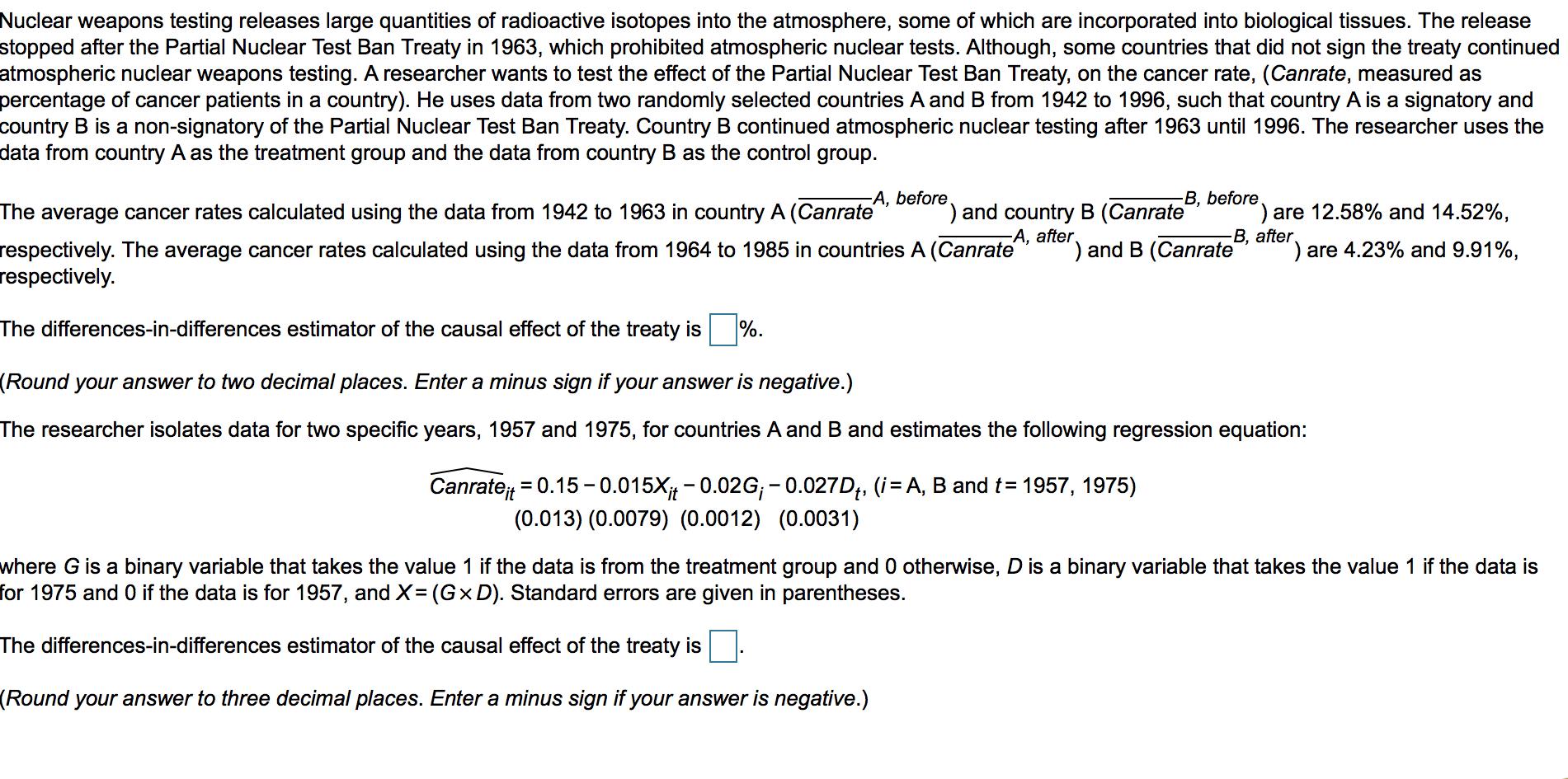Answered step by step
Verified Expert Solution
Question
1 Approved Answer
Nuclear weapons testing releases large quantities of radioactive isotopes into the atmosphere, some of which are incorporated into biological tissues. The release stopped after

Nuclear weapons testing releases large quantities of radioactive isotopes into the atmosphere, some of which are incorporated into biological tissues. The release stopped after the Partial Nuclear Test Ban Treaty in 1963, which prohibited atmospheric nuclear tests. Although, some countries that did not sign the treaty continued atmospheric nuclear weapons testing. A researcher wants to test the effect of the Partial Nuclear Test Ban Treaty, on the cancer rate, (Canrate, measured as percentage of cancer patients in a country). He uses data from two randomly selected countries A and B from 1942 to 1996, such that country A is a signatory and country B is a non-signatory of the Partial Nuclear Test Ban Treaty. Country B continued atmospheric nuclear testing after 1963 until 1996. The researcher uses the data from country A as the treatment group and the data from country B as the control group. -A, before. The average cancer rates calculated using the data from 1942 to 1963 in country A (Canrate ) and country B (Canrate -A, after, respectively. The average cancer rates calculated using the data from 1964 to 1985 in countries A (Canrate ) and B (Canrate respectively. %. -B, before. are 12.58% and 14.52%, -B, after, ) are 4.23% and 9.91%, The differences-in-differences estimator of the causal effect of the treaty is (Round your answer to two decimal places. Enter a minus sign if your answer is negative.) The researcher isolates data for two specific years, 1957 and 1975, for countries A and B and estimates the following regression equation: Canratet = 0.15-0.015Xit -0.02G; -0.027D, (i= A, B and t= 1957, 1975) (0.013) (0.0079) (0.0012) (0.0031) where G is a binary variable that takes the value 1 if the data is from the treatment group and 0 otherwise, D is a binary variable that takes the value 1 if the data is for 1975 and 0 if the data is for 1957, and X= (GxD). Standard errors are given in parentheses. The differences-in-differences estimator of the causal effect of the treaty is (Round your answer to three decimal places. Enter a minus sign if your answer is negative.)
Step by Step Solution
★★★★★
3.50 Rating (157 Votes )
There are 3 Steps involved in it
Step: 1
Answer 1 The differencesindifferences estimator of the causal effect of the Partial Nuclear Test Ban ...
Get Instant Access to Expert-Tailored Solutions
See step-by-step solutions with expert insights and AI powered tools for academic success
Step: 2

Step: 3

Ace Your Homework with AI
Get the answers you need in no time with our AI-driven, step-by-step assistance
Get Started


